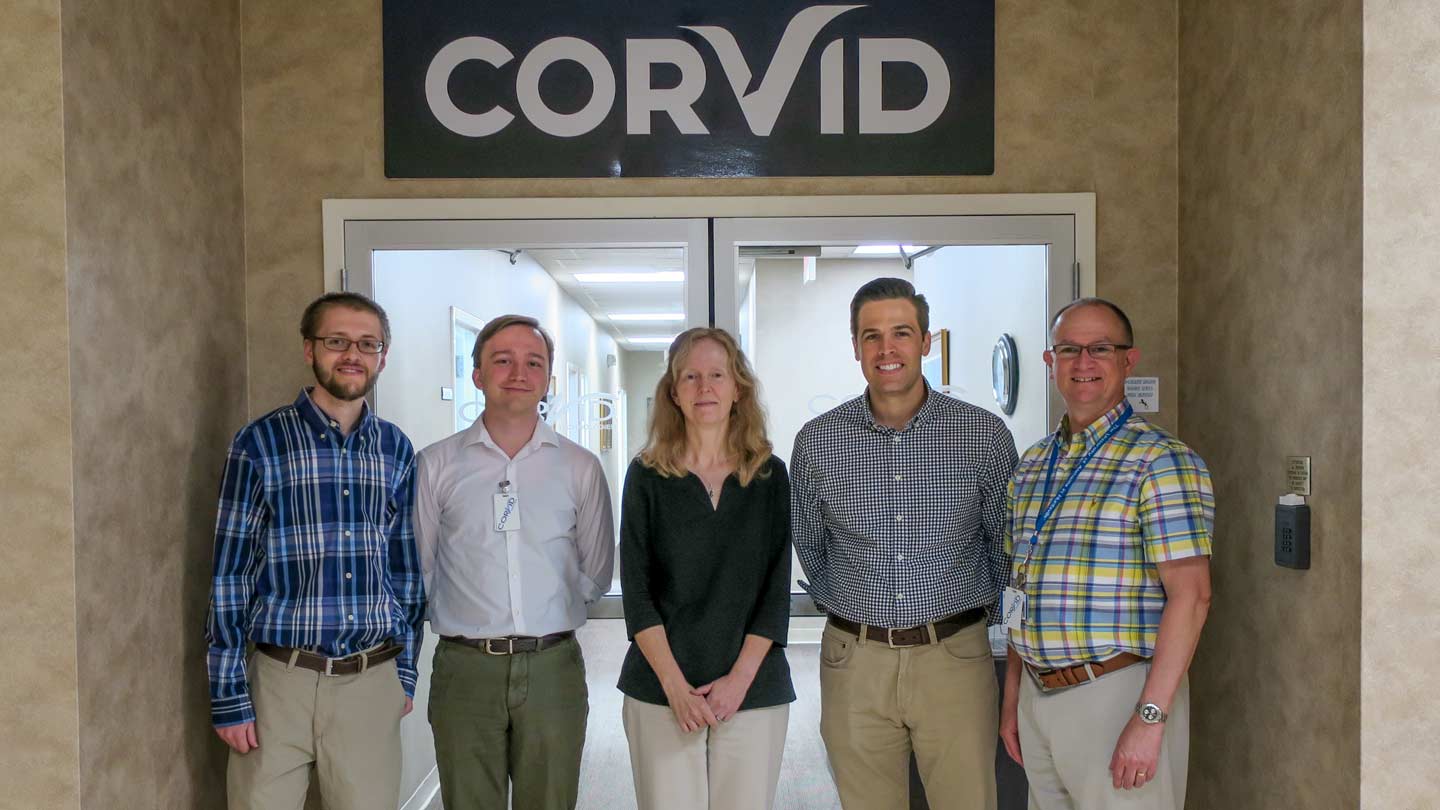
UAH alumnus Patrick Bradley, Ph.D. candidate Kiley Heflin, alumna Dr. Georgia Richardson, master’s candidate Samuel Nuckols, and associate professor Dr. Mikel Petty are developing a model for generating electro-optical and infrared scenes resulting from a missile intercept.
Corvid
Dr. Mikel Petty, an associate professor in the Department of Computer Science at The University of Alabama in Huntsville (UAH) and senior scientist for modeling and simulation at UAH’s Information Technology and Systems Center, was awarded a contract to develop a model for generating electro-optical and infrared (EO/IR) scenes resulting from a missile intercept. The project is being led by space and defense contractor Corvid Technologies, with principal investigator Dr. Georgia Richardson, a UAH alumna, and Patrick Bradley, a UAH alumnus, who is also working on the project at Corvid.

A data image showing a synthetic version of the light curves resulting from an intercept.
Dr. Mikel Petty
"The project as a whole is developing models to simulate the collision of a missile and an interceptor to see how the resulting spray of debris and flash of light are sensed by electro-optical and infrared sensors," says Dr. Petty. That capability is important to the Missile Defense Agency’s Ballistic Missile Defense System, which includes both radio and EO/IR sensors. "Our goal is to better interpret sensor readings using the simulation results."
UAH’s portion, which accounts for a quarter of the overall project, involves benchmarking and validating the model’s results to assess and quantify its accuracy. "We’re developing a suite of quantitative metrics that measure model accuracy and software that is able to calculate those metrics," he says. To help meet the project’s objectives, Dr. Petty is working with two graduate research assistants whose assistantships are covered by the award: Kiley Heflin, a Ph.D. candidate in physics who earned his undergraduate and master’s degrees at UAH, and Samuel Nuckols, a master’s degree candidate in computer science who earned his undergraduate degree in business at UAH.

An infrared image of an intercept
Missile Defense Agency
Each brings a unique skill set to the project given their background and academic focus. With his experience in statistical mechanics and kinetic theory, Heflin is tasked with interpreting the thermodynamic properties of the post-intercept flash of light. "There are different thermodynamic values you can calculate from the existing flight test data," says Heflin, who is planning to write his dissertation on pulsar timing residuals. Nuckols, meanwhile, is using his knowledge of coding to build a software model that can run a sensitivity analysis on the model’s output. "I think the classes I’ve taken so far have almost directly prepared me on the computer science side," says Nuckols, who spent six years as a banking professional before returning to UAH to pursue his graduate studies.
At present, the team is one year into the two-year effort. "It’s a painstaking process, because the simulation uses a high-fidelity physics-based model in which every relevant detail is recreated," says Dr. Petty. He is confident, however, that they will be able to deliver their results on time, with the result benefiting not just the Missile Defense Agency but also the students themselves. Thanks to their involvement on the project, both are in the process of attaining a security clearance, which will in turn give them a competitive edge upon graduation. "I’d like to work for a large defense company," says Nuckols, "so this is great."
Approved for Public Release
18-MDA-9783 (12 Sep 18)